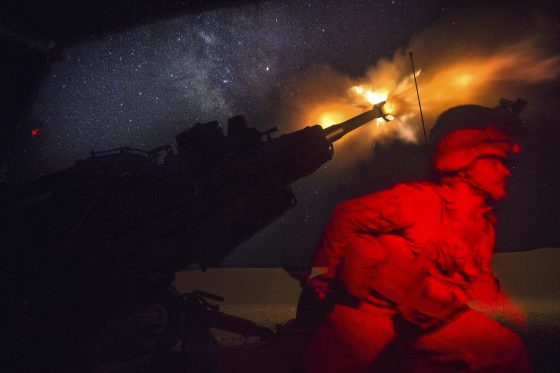BESA Center Perspectives Paper No. 627, October 26, 2017
EXECUTIVE SUMMARY: ISIS is facing defeat and liquidation, but its members are dispersing throughout the world and establishing local branches. The idea of the Islamic Caliphate is not dead, and the struggle in the West is not over. ISIS may disappear as an organization, but the world will continue to suffer from the evil spirit that this organization has instilled among too many Muslims.
As the city of Raqqa, the capital of the “Islamic State in Iraq and Syria,” falls to the Free Syrian Army, made up primarily of Kurdish and Syrian militias, the question is what the aftermath of ISIS will look like.
The answer is threefold and involves the organization, its members, and its ideology.
The organization may well be routed and eradicated. The large swathe of territory it controlled will be divided among Syria, Iran, Turkey, and the Kurds, and its government institutions will become relics of the past. The attempt to reestablish the Islamic caliphate failed because the Muslim world – not only the “infidels” – despised its gruesome, seventh-century execution methods.
Most of the organization’s members are already elsewhere, however, and they carry a sense of righteousness in their hearts. They feel betrayed and will seek revenge against all those who attacked them. Those include the Kurds and the coalition countries; Muslims who stood by and did not help them, such as former Soviet bloc countries; and countries that helped but then abandoned them along the way, such as Turkey and Saudi Arabia.
These jihadists have dispersed in many countries. They are establishing proxies in Egypt’s Sinai Peninsula, Libya, Yemen, Nigeria, Mali, the Philippines, and elsewhere, with each branch adjusting its structure and activities to the environment in which it operates. Variables include the degree to which local governments effectively wield power, the degree to which the local Muslim population is supportive, and the degree to which a terrorist organizational infrastructure already exists and can be utilized.
We saw a similar phenomenon after the defeat of al-Qaida in Afghanistan in late 2001, when one of its offshoots settled in Iraq and joined with the local Sunni population and the remnants of Saddam Hussein’s army to form ISIS. Beginning in April 2003, it began exploiting the weak central government in Baghdad, and in March 2011, the government in Damascus.
Every local proxy, however, will suffer from the same fundamental problems prevalent in any radical Islamic group. There will be disagreements within the group over Sharia law and its implementation; over ruling a territory or remaining a non-sovereign jihadist entity; the severity of punishment for offenders; the title of leader (whether he will be named caliph or not) and his authority; the group’s relations with similarly minded organizations; the status structure within the organization (Arabs versus non-Arabs, Muslims by birth versus Muslims by conversion), and more. There will also be the problem of hostility between the Islamic organization and the local population, Muslim or otherwise, over which it wants to rule. In addition, the international community’s traditionally negative view of Islamic terrorist organizations could lead to all-out war.
Another question is how the Islamic world will be affected by the dashed dream of a caliphate. The fall of ISIS will assuredly bolster those who oppose political Islam. On the other hand, the fall of the Sunni organization strengthens the Shiite axis. The slow crawl of Sunni leaders (Turkey and Saudi Arabia) towards Iran is one sign of the Shiite axis’s growing power at the expense of the Sunnis. (US President Donald Trump’s recent speech might slow this trend down, depending on the action the US takes.)
The idea of an Islamic caliphate is not dead. It is alive and well in religious scriptures, textbooks, Friday sermons, internet forums, and the hearts of many millions. In the near or distant future it will be resurrected, shake off the memory of recent events, and begin anew. There will always be people who dream of ancient glory, of the resurrection of ancestral Salafism and its forefathers – the prophet Muhammad and his cohort, who “lived an ideal and proper lifestyle and showed us the right path for any place, time and environment.”
What is clear is that the fight against the “heretic, permissive, hedonistic, materialistic, drugged and inebriated West” will persist through lone-wolf or small-cell terrorist attacks. Countries around the world will continue to suffer from ramming attacks, stabbings, shootings, rapes, violence against women and children, public vandalism, and other variances of jihad against all those who do not belong to the religion of Muhammad. ISIS may well disappear as an organization, but the world is likely to continue feeling the evil ideology this organization has instilled in the hearts and minds of too many Muslims.
This article was published in Israel Hayom on October 16, 2017.
Dr. Mordechai Kedar is a senior research associate at the Begin-Sadat Center for Strategic Studies. He served for 25 years in IDF military intelligence specializing in Syria, Arab political discourse, Arab mass media, Islamic groups, and Israeli Arabs, and is an expert on the Muslim Brotherhood and other Islamist groups.
BESA Center Perspectives Papers are published through the generosity of the Greg Rosshandler Family


